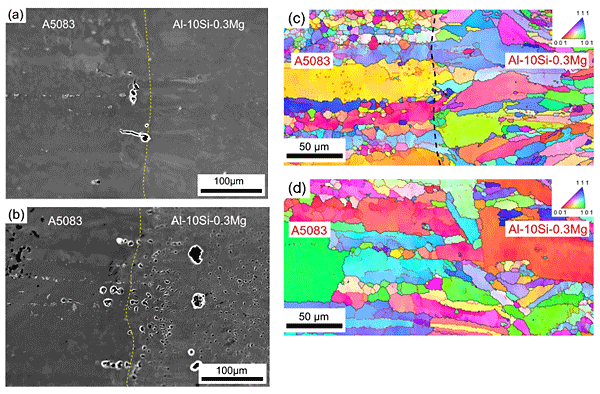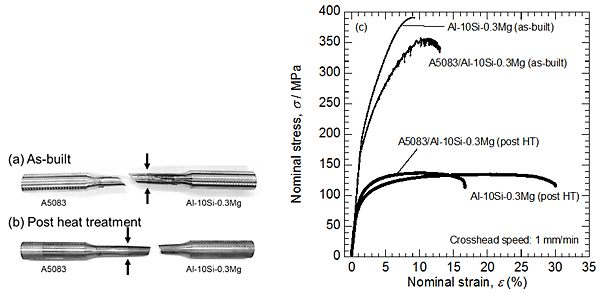Al-10Si-0.3Mg alloy has been additively manufactured (AM) on a commercial A5083 aluminum alloy bar through powder bed fusion (PBF) process. EOS M280 selective laser melting system was used in this study. Post heat treatment at 813 K for 2 h in air was carried out after the building.
Figure 1 shows the microstructure of the bonding interface. A part of the A5083 alloy melted by laser irradiation. No crack was observed at the bonding interface.
Energy-dispersive X-ray spectroscopy [Fig. 2] reveals the diffusion of Mg atoms from A5083 aluminum alloy to Al-10Si-0.3Mg alloy after the post heat treatment.
Tensile tests were carried out with the crosshead speed of 1 mm/min. The shape of the specimen is 6 mm in diameter and 34 mm gage length. Results of the tensile tests were shown in Fig. 3. The bonding strength before the heat treatment was higher than the tensile strength of A5083 alloy. The bonding strength after the heat treatment was higher than the tensile strength of Al-10Si-0.3Mg alloy.
Experimental results indicate that the PBF process has a potential to manufacture dissimilar aluminum alloy joints. In addition, Al-10Si-0.3Mg alloy possesses good bonding potential to A5083 aluminum alloy even after post heat treatments. A5083 alloy can be used as an interface part between AM Al-10Si-0.3 Mg alloy and conventional aluminum alloys.


